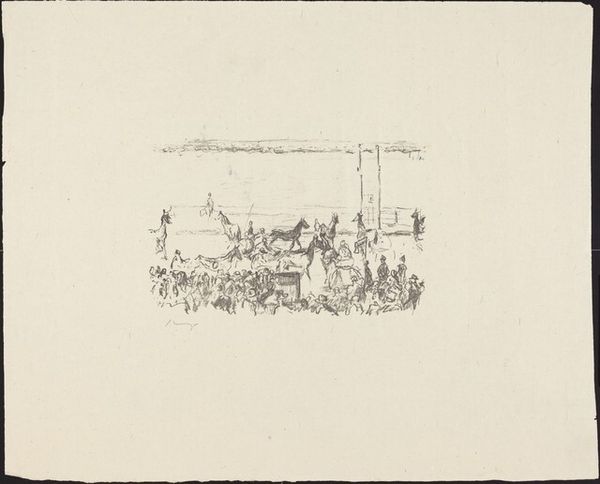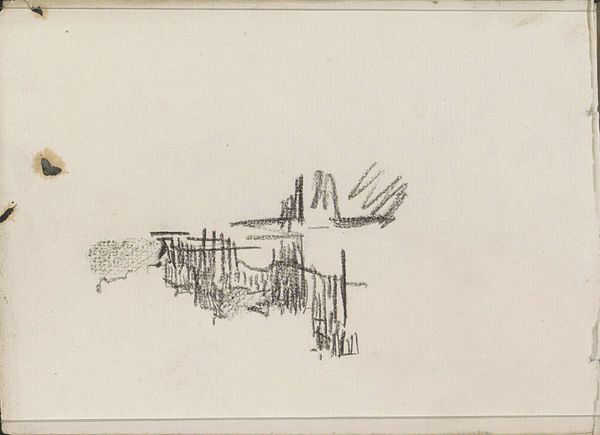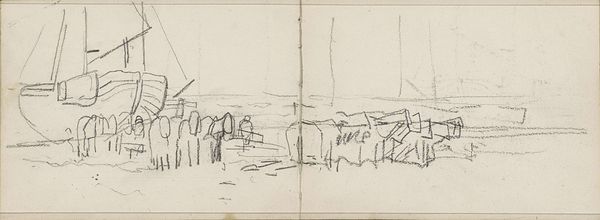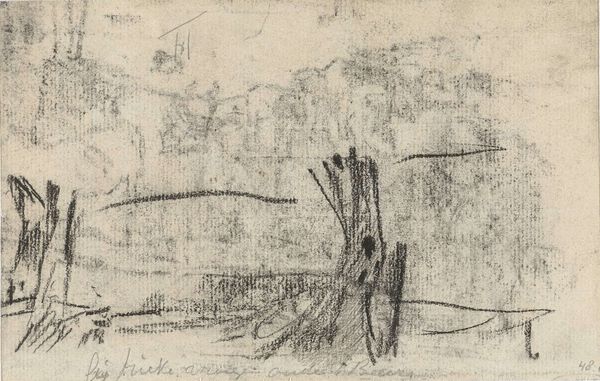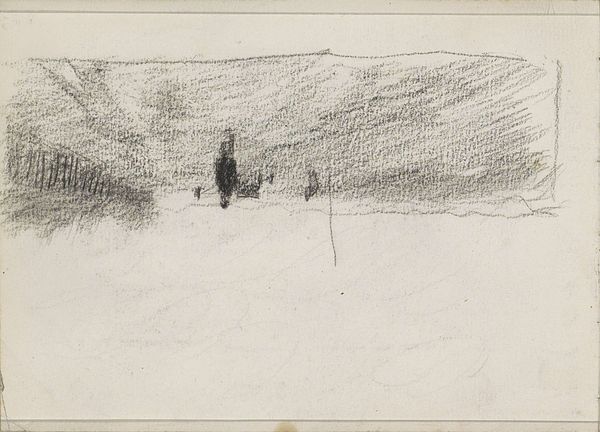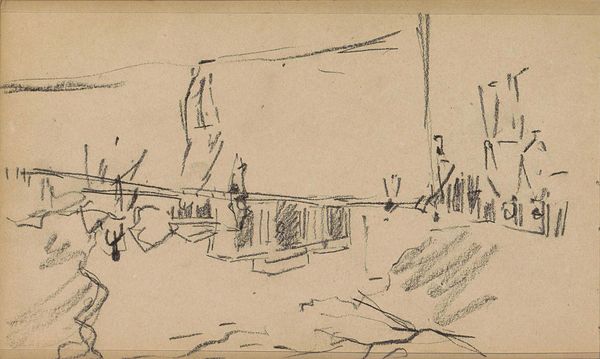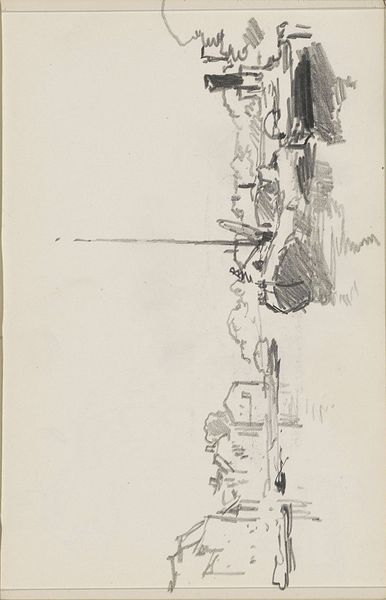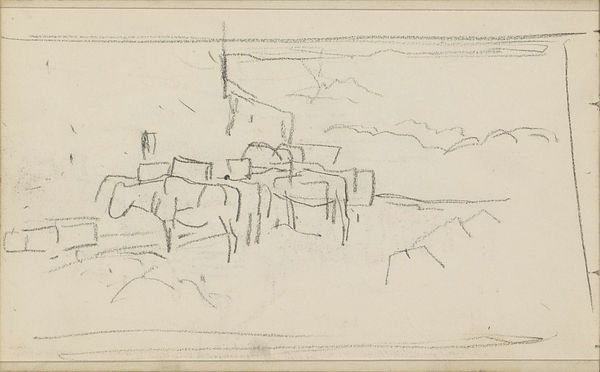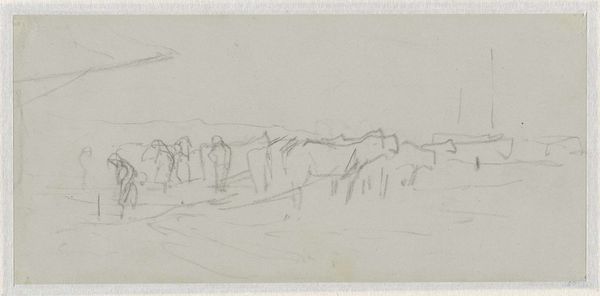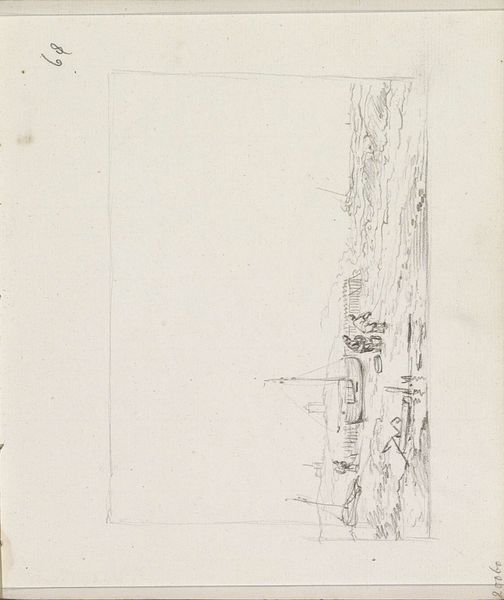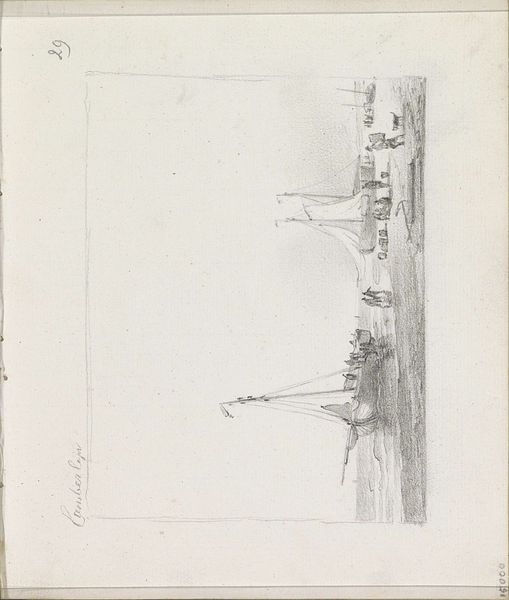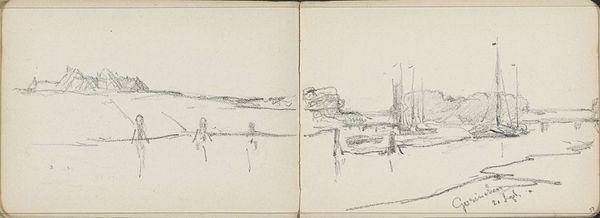
drawing, pencil
#
drawing
#
aged paper
#
light pencil work
#
quirky sketch
#
impressionism
#
sketch book
#
landscape
#
personal sketchbook
#
idea generation sketch
#
sketchwork
#
pen-ink sketch
#
pencil
#
sketchbook drawing
#
sketchbook art
Copyright: Rijks Museum: Open Domain
Editor: We’re looking at “Figuren op een heuvel met drie vlaggenmasten,” or “Figures on a hill with three flagpoles,” a pencil drawing by Anton Mauve, made sometime between 1848 and 1888, currently at the Rijksmuseum. It's such a spare, almost ghostly scene. What strikes you about this sketch? Curator: Well, what immediately catches my eye is its raw quality. This piece appears to be a preliminary sketch, almost a glimpse into Mauve's artistic process. Consider the socio-political climate of the time. Sketches like these were rarely intended for public display. Instead, they served as a space for private experimentation, a visual diary where artists could freely explore ideas without the pressure of public reception. It raises a question, doesn’t it? What was the intended audience? Was this purely for personal reflection, or a step towards a larger, more public work? Editor: That’s a good point! I hadn’t considered the "privacy" aspect so explicitly. The flagpoles, even in this sketchy form, suggest something more official or public, maybe contradicting the personal feel. Curator: Exactly! The presence of those flagpoles – symbols of nationhood and public display – alongside the intimate, almost vulnerable nature of the sketch, creates a fascinating tension. Mauve was working during a period of intense national identity formation in the Netherlands. These flagpoles could symbolize a burgeoning sense of national pride or even hint at political tensions, subtly embedded within this otherwise unassuming landscape. Editor: So you're saying even a seemingly simple sketch can offer insight into broader social and political currents? Curator: Precisely! And it makes you wonder about the figures themselves, doesn’t it? Their anonymity invites us to project our own interpretations onto them. Who are they? What is their relationship to the land and to the symbols of authority represented by the flagpoles? It's in these quiet, unresolved questions that the power of this sketch resides. Editor: I never would have thought there was so much to unpack! I’m seeing how even unfinished works give insight into cultural contexts. Curator: Indeed. They show us not only what the artist intended to present, but also how artists were engaging with their society and times.
Comments
No comments
Be the first to comment and join the conversation on the ultimate creative platform.

